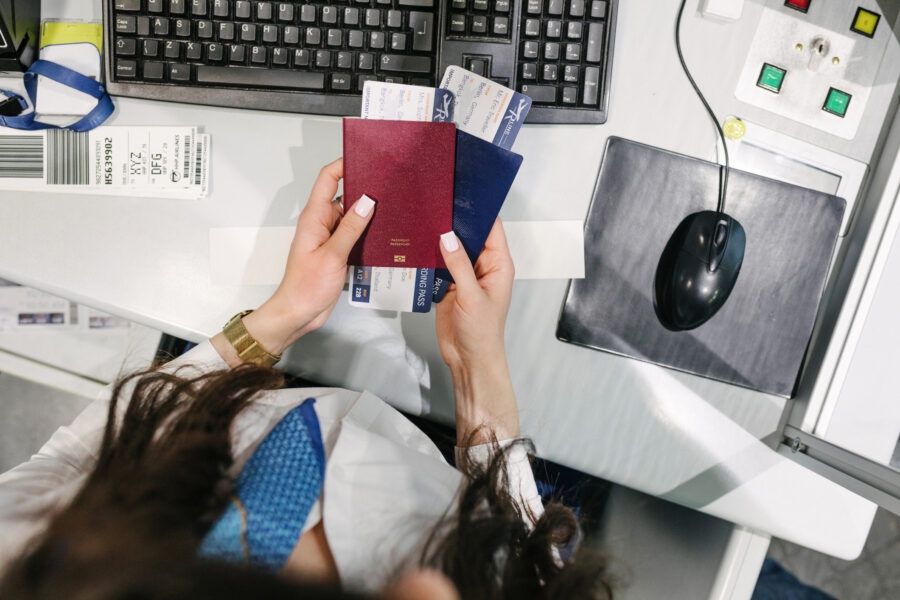Visa sponsorship is often the first step to living, working, or studying in another country. If you’re aiming for a new job, higher education, or long-term residency abroad, understanding how sponsorship works makes the process easier. This guide explains everything in simple, clear terms so you know what it is, how it works, and how to get started without confusion.
What Is Visa Sponsorship?
Visa sponsorship happens when a company, organization, or individual supports your visa application to legally live, work, or study in a foreign country. The sponsor takes on some legal responsibility and often handles or helps with the visa paperwork, job offer, and sometimes the cost. Without a sponsor, most foreign nationals are not eligible to apply for a visa on their own for work or long-term stay.
Types of Visa Sponsorship:

- Employment-Based Sponsorship: A company hires a foreign worker and sponsors their work visa. This is the most common form of visa sponsorship and applies to both skilled and unskilled positions depending on the country’s demand.
- Educational Sponsorship: A university accepts an international student and supports their student visa. This includes issuing admission letters and documents required to apply for a study permit.
- Family Sponsorship: A relative who is a citizen or permanent resident sponsors you for immigration. This can include spouses, parents, children, or siblings, depending on the country’s immigration policy.
- Government or Humanitarian Sponsorship: Governments or programs sponsor refugees or individuals under special circumstances. This type of sponsorship is typically arranged through official channels and often includes financial and settlement assistance.
Read: USA Scholarships That Include Visa Sponsorship
How Does Visa Sponsorship Work for Jobs?
When a company wants to hire someone from another country, it must prove that the role cannot easily be filled by a local worker. The process usually involves:
- Offering a formal job to the foreign applicant.
- Applying to the government for permission (like a labor market test or certificate).
- Submitting visa documents, including the job contract, salary details, and justification for hiring a foreign worker.
Some countries also require the employer to prove that they have advertised the position locally but couldn’t find a suitable candidate. After government approval, the applicant uses the sponsorship documents to apply for a visa or permit.
Employers must often meet specific requirements, such as paying the minimum wage, offering full-time hours, and maintaining good legal standing with labor departments. In many cases, the employer remains responsible for reporting any changes in the worker’s status, such as termination or a change in job duties.
Some sponsorships are for temporary visas, such as seasonal work or contracts lasting 1 to 3 years. Others may allow for extensions or even provide a path to permanent residency, especially in countries like Canada or Australia.
Who Can Sponsor You for a Visa?
Several types of sponsors can help you get a visa depending on your purpose for moving:

- Employers: Businesses that need skilled or specialized labor often sponsor foreign workers. This is common in IT, healthcare, engineering, and trades.
- Universities and Colleges: Educational institutions issue documents that support a student visa. They also help guide students through the visa application process.
- Family Members: In family-based immigration, a citizen or permanent resident must prove they can financially support the applicant and that the relationship is genuine.
- Government Agencies: Some government programs recruit talent or support specific migration streams. For example, rural or regional migration programs often include sponsorship.
- Religious or Cultural Organizations: Certain visas allow sponsorship through nonprofit or religious organizations, especially for cultural exchange or religious work.
In all cases, sponsors need to meet government requirements, submit accurate documentation, and often provide proof of financial capability or legal responsibility.
Read: Visa Sponsorship 101: How Skilled Immigrants Can Secure U.S. Job Opportunities
How to Find a Job With Visa Sponsorship
Finding a job that comes with visa sponsorship takes strategy and research. Here are practical steps:
Use the Right Job Platforms
- Search on global job boards like Indeed, Glassdoor, LinkedIn, and SimplyHired.
- Use filters for “Visa Sponsorship Available” or “Hiring International Applicants.”
- Check country-specific websites like Job Bank Canada, GOV.UK jobs, or Australian JobSearch.
- Explore niche sites like H1Bdata.info (for U.S. jobs) or JobServe (for UK-based roles).
Focus on Industries That Commonly Sponsor
- Technology (IT, Software Engineering): High demand and global skills shortage make this one of the best sectors for sponsored jobs.
- Healthcare (Nurses, Doctors, Support Staff): Aging populations and staff shortages drive sponsorship opportunities.
- Finance and Accounting: Roles like auditors, analysts, and tax experts are often sought after.
- Engineering and Construction: Infrastructure projects need experienced professionals from around the world.
- Skilled Trades and Logistics: Positions like welders, truck drivers, and electricians are in high demand.
Apply to International Companies
Multinational companies and global startups are more likely to sponsor foreign workers, especially if they have offices in different countries. Look at company career pages and check their history of sponsoring visas.
Tailor Your Application
- Use a resume format accepted in your target country (e.g., no photo in the U.S., detailed CV in the UK).
- Write a strong, focused cover letter that explains your value and your interest in relocation.
- Mention relevant experience, certifications, and languages spoken that align with the job.
How to Ask an Employer for Sponsorship
Bringing up visa sponsorship can feel uncomfortable, but timing and clarity help:

When to Ask
- If the job posting mentions sponsorship: include your visa status in your initial application.
- If not: wait until the interview stage, once they show interest and you’ve had a chance to prove your value.
How to Ask
- Be direct but respectful. Example: “I’m currently on a visa that requires employer sponsorship. Is your company open to sponsoring international candidates?”
- Offer to provide supporting documents and explain your visa type.
- Emphasize your skills and readiness to contribute immediately.
Employers may be more open to sponsoring if they already have experience with international hires or if your skills are hard to find locally.
Best Countries for Visa Sponsorship Jobs
Different countries have different immigration systems, but some are more open to hiring international workers with sponsorship.
United States
- Common Visa: H-1B (for skilled workers)
- Who Can Sponsor: U.S. employers
- Note: Competitive process, capped annual quota. Also offers L-1, O-1, and EB-3 sponsorship paths.
Canada
- Common Route: Labour Market Impact Assessment (LMIA) + work permit
- Who Can Sponsor: Employers with LMIA approval
- Note: Can lead to permanent residency via Express Entry or Provincial Nominee Programs
United Kingdom
- Common Visa: Skilled Worker Visa
- Who Can Sponsor: Employers on the UK Sponsor List
- Note: Offers healthcare worker and shortage occupation fast-track options
Australia
- Common Visa: Temporary Skill Shortage (TSS) Visa (subclass 482)
- Who Can Sponsor: Approved businesses
- Note: Pathways to permanent residency available through employer nomination
Each of these countries maintains an updated list of in-demand jobs, which is useful for targeting your application.
Read: $25k U.S. Visa Sponsorship Opportunities in 2025
Tips to Increase Your Chances of Getting Sponsored
Want to get sponsored faster? These simple tips can help you stand out and get noticed by the right sponsors.
- Develop Skills in Demand: Research the most wanted skills in your target country and build them.
- Get Certified: Earn credentials that are globally recognized (like PMP, CPA, AWS, IELTS, etc.).
- Network Smartly: Join LinkedIn groups, attend online webinars, and connect with expats and professionals.
- Stay Updated: Follow immigration news and watch for program updates or changes.
- Be Proactive: Don’t wait for employers to offer sponsorship identify companies that already sponsor and pitch yourself directly.
- Create a Digital Portfolio: Showcase your work online through GitHub, Behance, or a personal website.
Common Visa Sponsorship Mistakes to Avoid
Avoid these common mistakes that can cost you a visa sponsorship or delay your application.
- Applying Blindly: Many jobs do not offer sponsorship always check first or look for a note on international hiring.
- Hiding Your Status: Be transparent about needing sponsorship to avoid delays or disqualification later.
- Not Researching Requirements: Each visa has specific documentation and rules know them ahead of time.
- Weak Applications: Make sure your resume is strong, relevant, and country-appropriate.
- Ignoring Timeframes: Visa processes can take months. Apply well in advance and factor in processing time.
Visa sponsorship is one of the most powerful paths to building a future in another country. But it requires more than just sending out resumes. You need to target the right jobs, communicate clearly, and position yourself as a strong, valuable candidate. With the right strategy, skills, and preparation, visa sponsorship is possible. Focus on countries and employers that welcome international talent, and take consistent steps toward making yourself the best candidate they can sponsor.
Always keep learning, upgrading your skills, and staying informed. The better prepared you are, the easier it becomes to stand out and secure the sponsorship you need to take your next big step.


